The best battery charger for most, if not all, jet skis will be a 12-volt smart-charger that charges at a MAX of 2 amps.
You must not charge over 2 amps! And you need to use a smart-charger! There are also other little details you need to do that we’ll discuss below.
They sometimes go by the names “trickle-charger” and “maintainer” too.
Important: Just like a boat, it’s good practice to vent your engine compartment for a few minutes before working on it or starting it, especially if it’s been sitting, or you just put gas in it!
1. NOCO GENIUS2, 2-Amp Fully-Automatic Smart Charger
My top pick for the best and overall ideal jet ski and watercraft battery charger is the NOCO GENIUS2 2-Amp Fully-Automatic Smart Charger. Here are the reasons why it’s my top pick.
Buy the NOCO GENIUS2, 2-Amp Fully-Automatic Smart Charger Here (Amazon Link Ad).
Features
- 2 Amps – not too much and not too little of charging power, it’s just right.
- Smart charger – It turns on and off as it’s needed.
- Has a built-in maintainer.
- Can detect sulfation and help restore the cells. (Super helpful for older batteries)
- One of the few smart chargers that will try to bring back a dead battery.
- Small – It doesn’t take up much room.
- Its alligator clips are easy to use on batteries.
- Temperature compensation – Needed for hot days or cold days in storage.
Tip: These chargers are the same you find for car batteries. So yes, you can use a charger made for car batteries for your PWC, so long as it’s 12-volt and meets the correct amps (under 2 amps).
2. Battery Tender Plus 12V Battery Charger and Maintainer
My second place pick is the Battery Tender Plus 12V Charger and Maintainer. Here is why I picked it!
Buy the Battery Tender Plus 12V Battery Charger and Maintainer Here (Amazon Link Ad).
Features
- 1.25 amps – Just enough amps to charge a small battery at a good speed.
- Super simple to use – Plug it in, connect to the battery and select 12 volts and let it go.
- Maintainer – Turns on and off as it’s needed.
- Small – Stores away nicely when not in use. (Nice, if you’re like me with too much junk and not enough storage)
3. A Solar Charger
Consider getting a solar battery charger like this one here (Amazon Link Ad).
A solar charger is a great option if you need to charge or maintain your battery without a power outlet. (It doesn’t even need to be in direct sunlight, just some, and it keeps the battery maintained)
This is what I use on my setup to help maintain the battery, and I go over the full details here. Is a solar charger actually work? Yes, it surprises many, read the post to understand why.
How To Charge A PWC Battery
We have a post here that goes over the steps to charge a PWC battery.
But here is a short version…
- For good results, remove the battery.
- Connect the positive (+) cable of the charger to the positive (+) post of the battery.
- Connect the negative (-) cable of the charger to the negative (-) post of the battery.
- Plug the charger power cord into the correct wall outlet.
- Wait for the smart charger lights to go on and let you know it’s charging.
When charging is done, remove the negative (-) cable of the charger first and the positive (+) cable next.
Battery Charger Is Not Charging???
If the charger status lights don’t come on when you connect it to the battery, then make sure you have it hooked up right.
- The positive cable of the charger goes to the positive of the battery, and the negative of the charger goes to the negative of the battery.
- If the lights do come on, but the charger says the battery is bad, you need to get a new battery. It’s too sulfated to recover.
Surface Charge
If the charger says it’s charged, but when you start the engine, it doesn’t start, then you only had a surface charge. There could be other reasons why your engine is not starting as talked about here.
A surface charge is not a full charge! You’ll need to get a new battery, no matter what the charger says about the battery charged status. (Batteries can lie, this is one of those examples)
Only a load tester can determine if the battery is good to start the engine, and not the LED light on the charger (or voltmeter!). If you don’t have a load tester, many auto part stores will load test a battery for you, and a lot do it for free!
Signs Of A Bad Battery
- 0 to 11.9 volts is considered bad.
- 12.4 volts is considered weak.
- 12.7 to 13.2 volts is considered good.
What matters more than voltage is amps, and a load tester can only test this. Many auto parts stores will load test a battery for you.
The easiest way to tell if your battery is bad is by listening to the engine area when you try to start.
- A weak battery will struggle to turn over, especially in the water.
- A super-weak battery will give you multiple clicking noises when you press the start button, as talked about here.
- A completely dead battery may power on the gauges, but nothing happens after that.
Most Starting Issues
The majority of starting issues you’ll run into will most often be a bad battery.
So if your engine won’t start, replacing the battery is often the first thing you should do, even if you think the battery is fine. (And double-check the new battery is fine too, I’ve had a few of those not work even when brand-new)
Charging Intervals?
Lead-acid batteries are rechargeable, but they will die and won’t recharge if you don’t use your machine for months.
It’s ideal to recharge your battery every 3 months that you don’t ride.
So if you don’t ride you in August and September, you should charge your battery at least once in October.
Tip: If you’re not riding for a few months, you should take the battery out and use the smart chargers with a maintainer built-in to keep the battery good when in storage.
Avoid Battery Switches!
No, your PWC does not have a battery switch and does not need one either.
Seriously, DO NOT install a battery switch! They make things worse and not as good as a simple solar charger.
Batteries Die From Inactivity
The reason why your battery dies is not that the thing is always pulling a little power, but instead, it’s because the lead-acid battery goes flat if it’s not being used regularly.
If you ride all the time, the battery stays active and lasts for a long time because it’s being used. However, when you leave it to sit for too long (months), it goes flat, and adding a battery switch doesn’t fix this.
Get A Solar Charger
Instead of a battery switch, consider getting a solar charger. When you’re not riding, hook up the solar charger, and it will keep the battery active and lasting for longer. See how I have my solar charger set up.
Charging Amps?
You want to charge your battery at a max of 2 amps. Lower amps like 0.5 (“500mA”) to 2 amps are fine too.
Going over 2 amps charges it too fast for these small batteries, and you can end up cooking the battery, which is very bad.
Charge In Ventilated Areas
When charging your battery, you need to have it ventilated, as lead-acid batteries release a small amount of hydrogen and oxygen when charging.
Leave the access panel, seat, or hood ajar when charging or better yet, take it out. Also, keep the rain off your machine when you have an access panel, seat, or hood open, so you don’t flood it with rainwater.
How Long Does It Take To Charge A PWC Battery?
It takes about 12 hours to charge an empty battery fully.
It can take longer or shorter, depending on what the smart charger considers is good for your battery. This is why we suggest using smart chargers, as they turn on and off as they’re needed.
You need to let your battery charge fully and slowly if you want the battery to last. It’s ideal to not rush these things.
When Should You Replace Your Battery?
The most I’ve gone without replacing a battery is 5 years, but that is because I kept it on the solar charger when I was not using it.
Ideally, it would be smart if you replaced it every 3 years.
Every Year Is A Problem
If you’re replacing your battery every year, then it means you’re not riding it enough or charging it enough during the off-season.
Lead-acid batteries go bad when they’re not used for months.
You can sometimes recover a dead battery that’s been sitting for a long time by charging it, but a good bit of them don’t recover.
Why Does My Jet Ski Battery Keep Dying?
We have a guide that explains why your jet ski battery keeps dying here.
Can You Jump Start A Jet Ski Instead Of Charging It?
No, do NOT jump-start a jet ski battery, especially from your car or truck. I explain why this is bad in this post.
Battery Sizes?
You need a 12-volt battery that ranges in sizes from 16, 20, to 30.
What type of battery you need and what is the best one to get can be found in this guide here.
Does Riding Around Charge The Battery?
No, riding your PWC will not fully charge your battery. It may give it a surface charge but nothing lasting.
PWCs use a stator and not an alternator like your car.
A stator only maintains a charge and does not fully charge as an alternator would.
Do You Need To Add Water To A Jet Ski Battery?
Adding water to jet ski batteries is not very common these days.
Most manufacturers are moving to sealed batteries, which makes adding water a thing of the past.
Even if you have a non-sealed battery, I would not add water to it and instead, get a new battery. The trouble you would have to go through to get the distilled water, get a hydrometer, and mess with dangerous sulphuric acid is not worth it if you ask me.
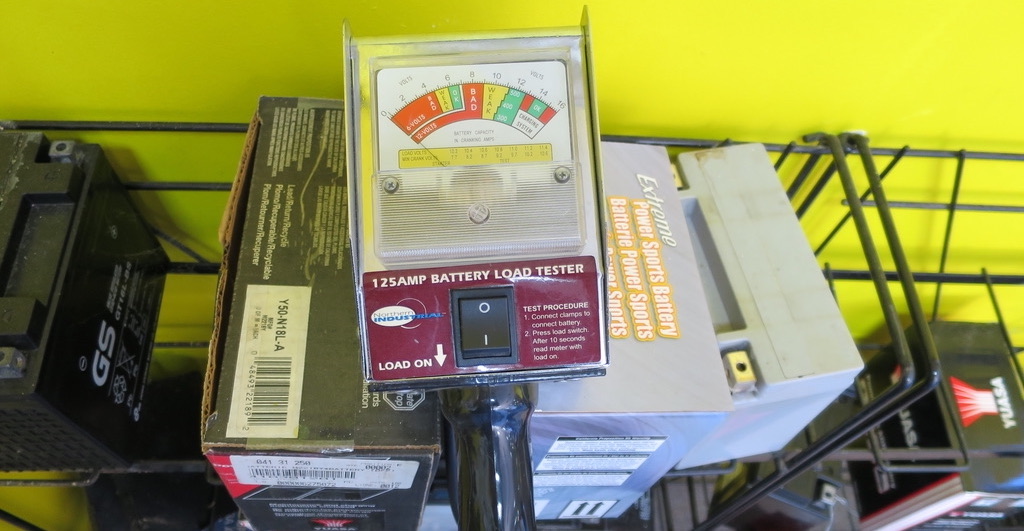
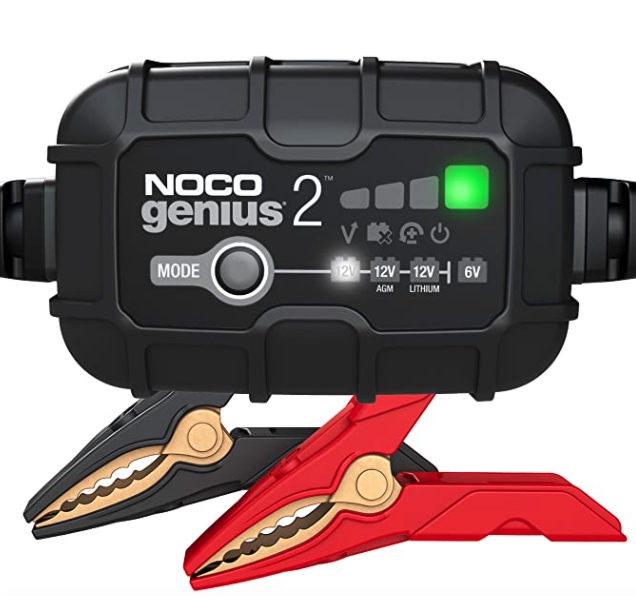
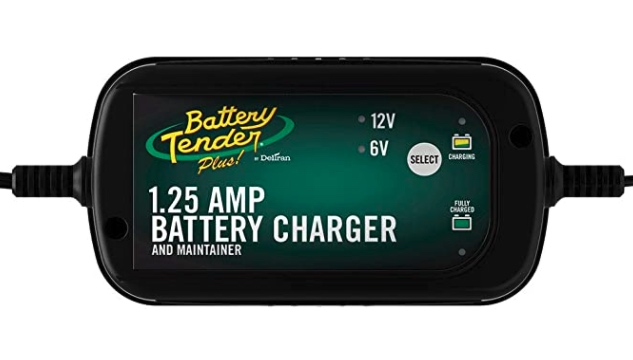
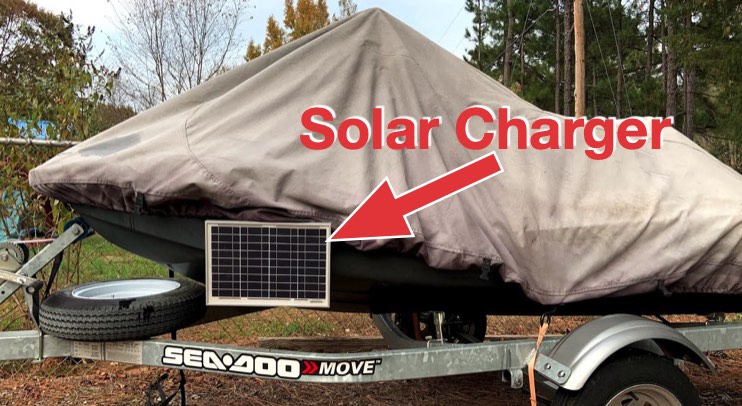
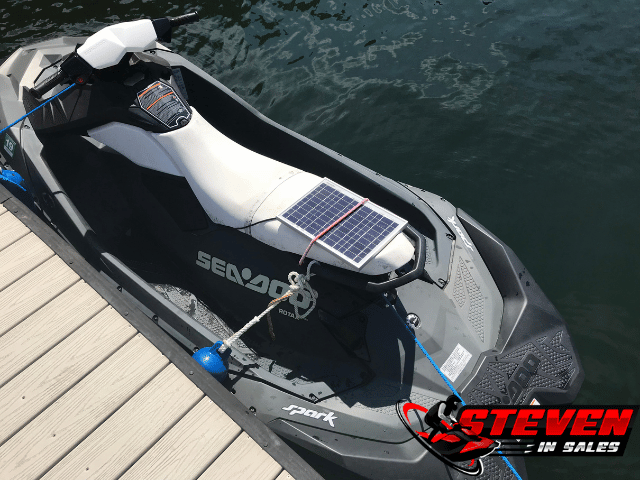
Great advice on battery and charger. I am looking at purchasing our first jetski, Seadoo gti 130. This website has been invaluable to supply the information I need. Thanks very much
Hi. Picked up the 2 amps NOCO charger and noticed the battery says charge at 1.8 amps. Will the extra charge amperage cause any issues? The same store also had a 1 amp NOCO available. Thanks.
It’s fine. I’ve never seen a 12-volt lead acid battery be that specific about charging amps (except maybe for computer power supplies, but not automotive), they usually round up to 2 amps. The biggest thing is that you don’t want to go over 2 amps, so avoid the 2.5, 3, 4, etc. amp chargers. Also, make sure it’s a smart charger, the ones that turn on and off as needed.
Hey Steve
I’ve just ordered a new GTX230 and will be keeping it on a Jetski Pod at a marina with a cover on it between rides, so no ability to have a smart charger hooked up.
A little confused by your battery charging advice in that; on the one hand you say the battery needs to be on a charger if you’re not riding the ski for more than 3 months (winter). So I’m guessing it will be fine if I’m riding the ski at least once a month year round, but then you go on to say that riding the ski won’t change it up because it runs on a stator & not an alternator?
So does this mean whether you ride it or not, it will still need to be charged up every three months?
Maybe I’ve misunderstood you, can you please clarify.
PS Yeah, we can ride year round in Oz no snow here. Our winters are just less hot than our summers
Cheers Steve
It’s more about keeping the battery active than charging it. When you ride your jet ski it’s keeping the battery active with the stator and so does putting it on a battery charger. A stator will charge a battery but it’s more of a side effect of maintaining the charge. If you’re not keeping the battery active the internal plates sulfate and cause it to die, this takes months to happen. Charging a dead lead acid battery will sometimes loosen the sulfation and allow the battery to charge again but if you ride it more or keep it on a smart charger the plates won’t sulfate. If the sulfation is too much the battery won’t recover when using a battery charger.
This is why I like the solar battery chargers as they supply just enough power to keep the battery active, they don’t even need to be in direct sunlight.
So if you’re riding your jet ski often, once a month is fine, you don’t need to charge the battery as you’re keeping it active. But if you go the whole winter without running the jet ski or keeping the battery on charge you run the risk of the battery being dead because it sulfated too much and the battery charger might not be able to “smack it back to life”.
Thanks! Have been reading your site for a few years now, always enjoy the new articles!
Timely article Steve, I just purchased a charger yesterday. Do you think it will work well? I picked it because I use a similar one on the pontoon boat – both are on lifts on a covered dock – the 2011 Kawi STX-15F is only half covered by roof. I ordered a Battery Tender 12V 800mA weather-resistant charger. This one:
https://www.batterystuff.com/battery-chargers/12-volt/marine-chargers/BTW022-0150.html
Yes, that one will work fine.